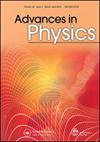Friction and energy dissipation mechanisms in adsorbed molecules and molecularly thin films
IF 13.8
1区 物理与天体物理
Q1 PHYSICS, CONDENSED MATTER
引用次数: 31
Abstract
This review provides an overview of recent advances that have been achieved in understanding the basic physics of friction and energy dissipation in molecularly thin adsorbed films and the associated impact on friction at microscopic and macroscopic length scales. Topics covered include a historical overview of the fundamental understanding of macroscopic friction, theoretical treatments of phononic and electronic energy dissipation mechanisms in thin films, and current experimental methods capable of probing such phenomena. Measurements performed on adsorbates sliding in unconfined geometries with the quartz crystal microbalance technique receive particular attention. The final sections review the experimental literature of how measurements of sliding friction in thin films reveal energy dissipation mechanisms and how the results can be linked to film-spreading behavior, lubrication, film phase transitions, superconductivity-dependent friction, and microelectromechanical systems applications. Materials systems reported on include adsorbed films comprised of helium, neon, argon, krypton, xenon, water, oxygen, nitrogen, carbon monoxide, ethane, ethanol, trifluoroethanol, methanol, cyclohexane, ethylene, pentanol, toluene, tricresylphosphate, t-butylphenyl phosphate, benzene, and iodobenzene. Substrates reported on include silver, gold, aluminum, copper, nickel, lead, silicon, graphite, graphene, fullerenes, C60, diamond, carbon, diamond-like carbon, and YBa2Cu3O7, and self-assembled monolayers consisting of tethered polymeric molecules.吸附分子和分子薄膜中的摩擦和能量耗散机制
本文综述了近年来在理解分子薄吸附膜中摩擦和能量耗散的基本物理以及在微观和宏观长度尺度上对摩擦的相关影响方面取得的进展。涵盖的主题包括宏观摩擦的基本理解的历史概述,薄膜中声子和电子能量耗散机制的理论处理,以及能够探测此类现象的当前实验方法。用石英晶体微天平技术测量在无约束几何中滑动的吸附物受到特别的关注。最后几节回顾了薄膜中滑动摩擦的测量如何揭示能量耗散机制的实验文献,以及如何将结果与薄膜扩散行为、润滑、薄膜相变、超导依赖摩擦和微机电系统应用联系起来。所报道的材料系统包括由氦、氖、氩、氪、氙、水、氧、氮、一氧化碳、乙烷、乙醇、三氟乙醇、甲醇、环己烷、乙烯、戊醇、甲苯、三烷基磷酸、磷酸叔丁基苯、苯和碘苯组成的吸附膜。报道的衬底包括银、金、铝、铜、镍、铅、硅、石墨、石墨烯、富勒烯、C60、金刚石、碳、类金刚石碳和YBa2Cu3O7,以及由拴链聚合物分子组成的自组装单层。
本文章由计算机程序翻译,如有差异,请以英文原文为准。
求助全文
约1分钟内获得全文
求助全文
来源期刊

Advances in Physics
物理-物理:凝聚态物理
CiteScore
67.60
自引率
0.00%
发文量
1
期刊介绍:
Advances in Physics publishes authoritative critical reviews by experts on topics of interest and importance to condensed matter physicists. It is intended for motivated readers with a basic knowledge of the journal’s field and aims to draw out the salient points of a reviewed subject from the perspective of the author. The journal''s scope includes condensed matter physics and statistical mechanics: broadly defined to include the overlap with quantum information, cold atoms, soft matter physics and biophysics. Readership: Physicists, materials scientists and physical chemists in universities, industry and research institutes.
 求助内容:
求助内容: 应助结果提醒方式:
应助结果提醒方式:


